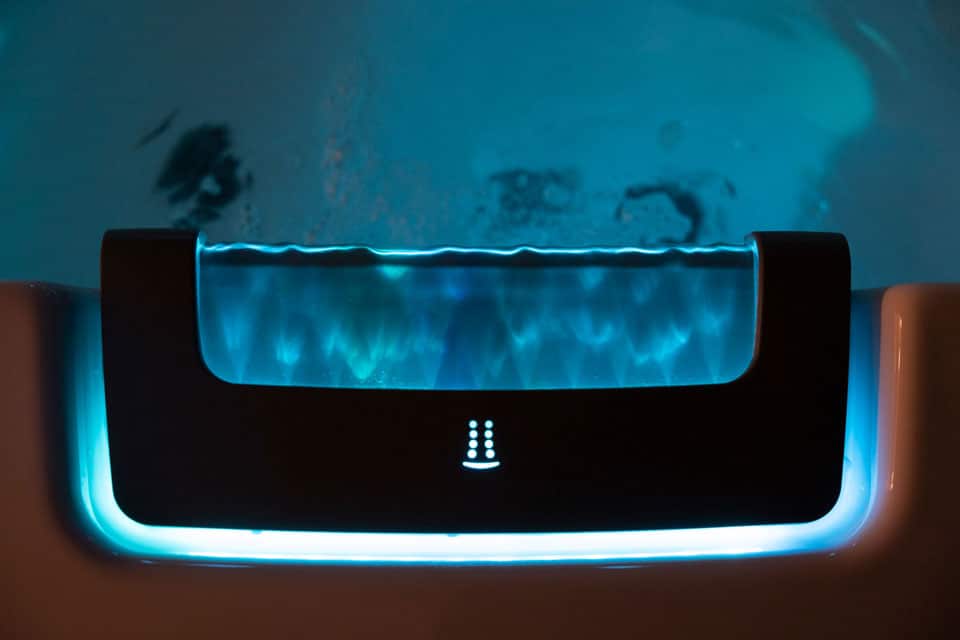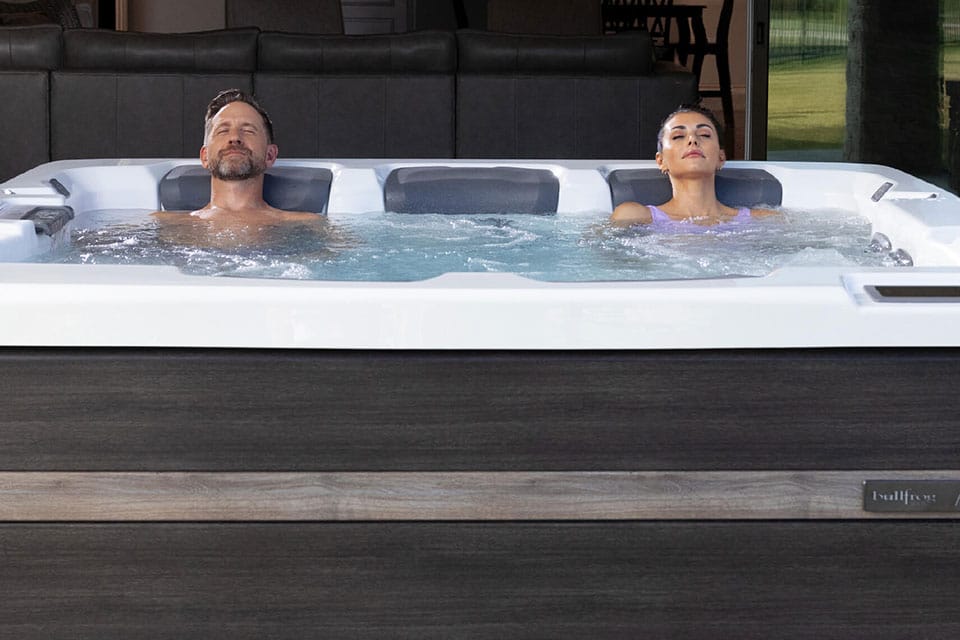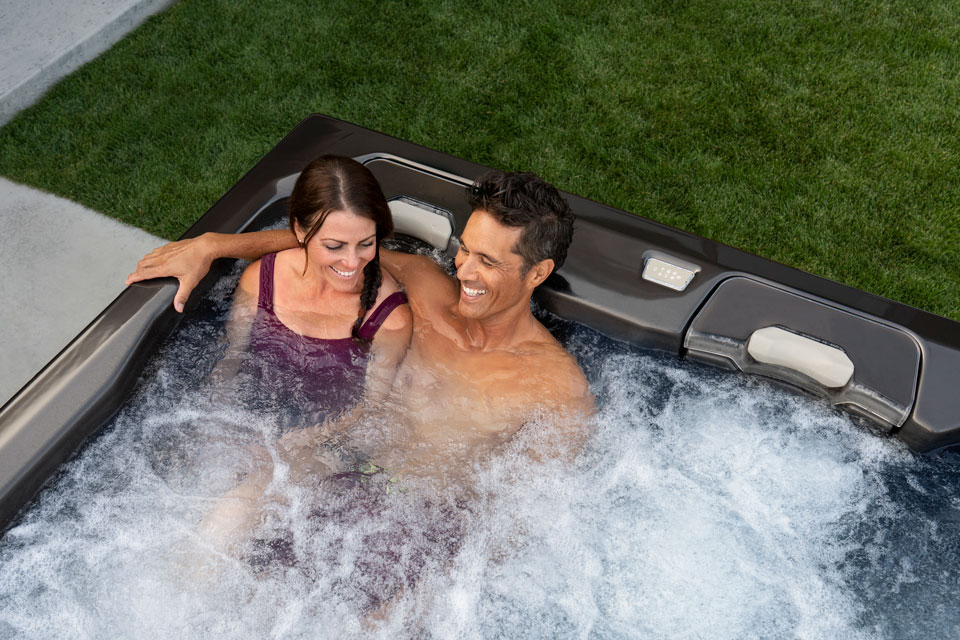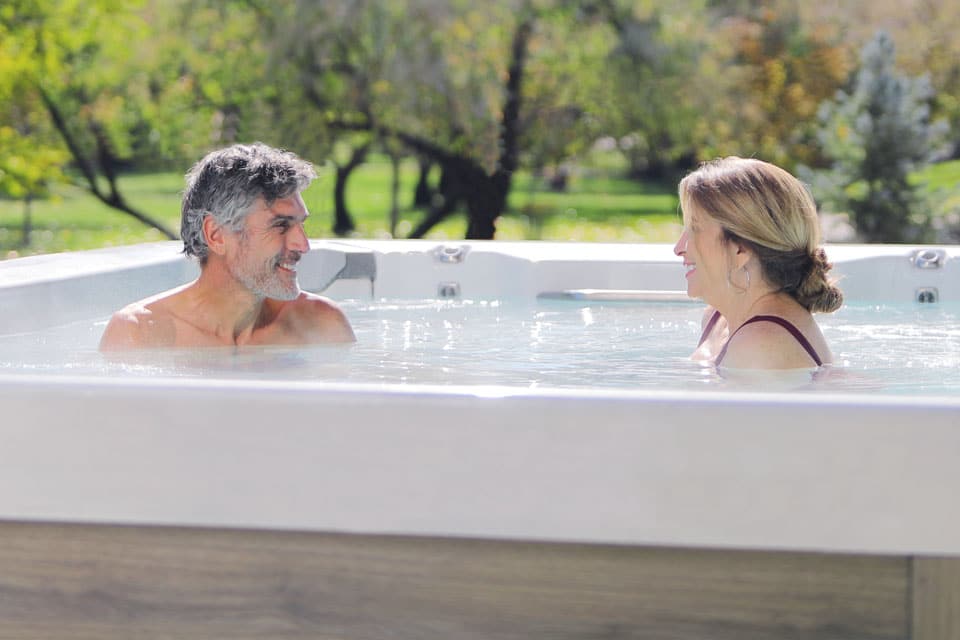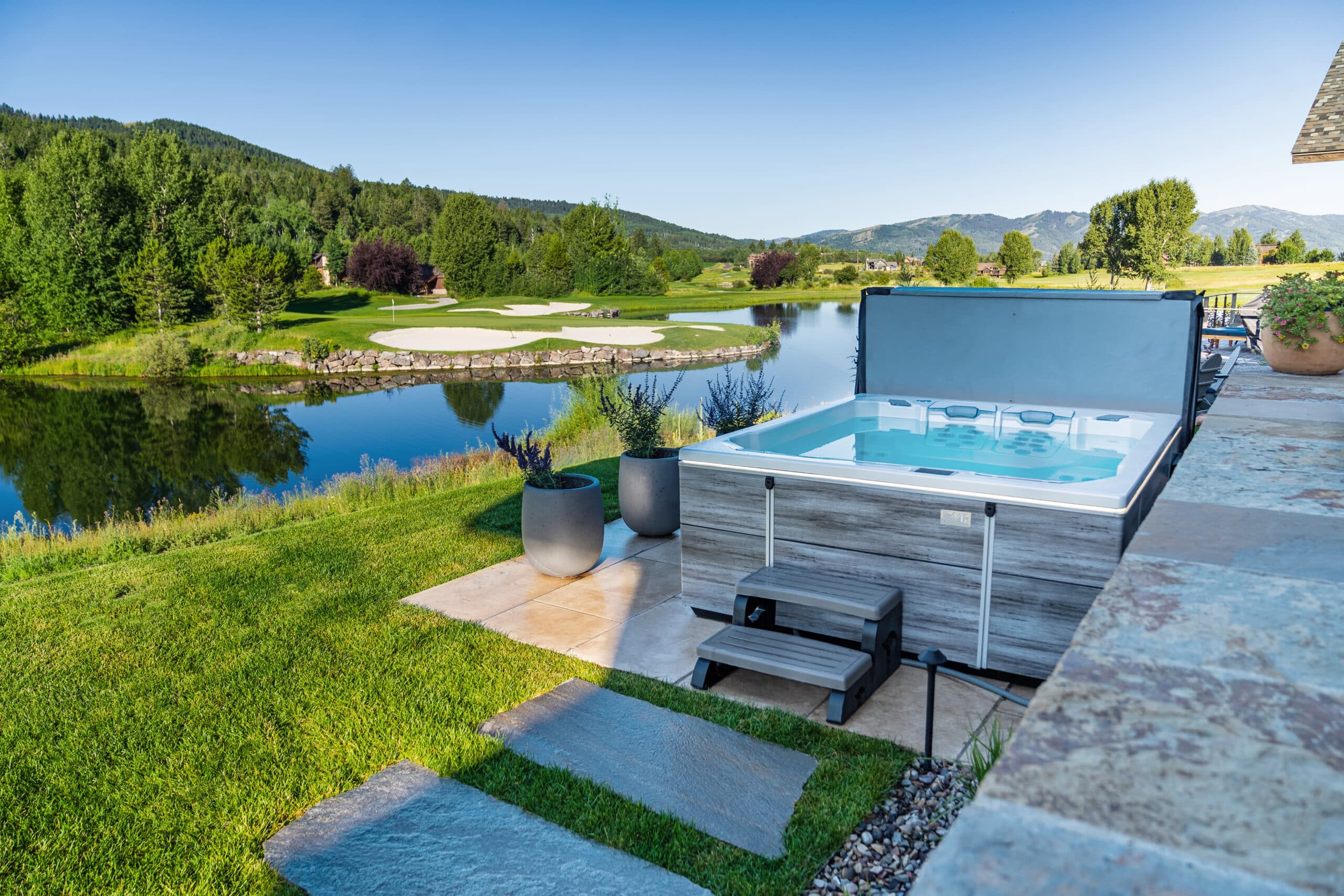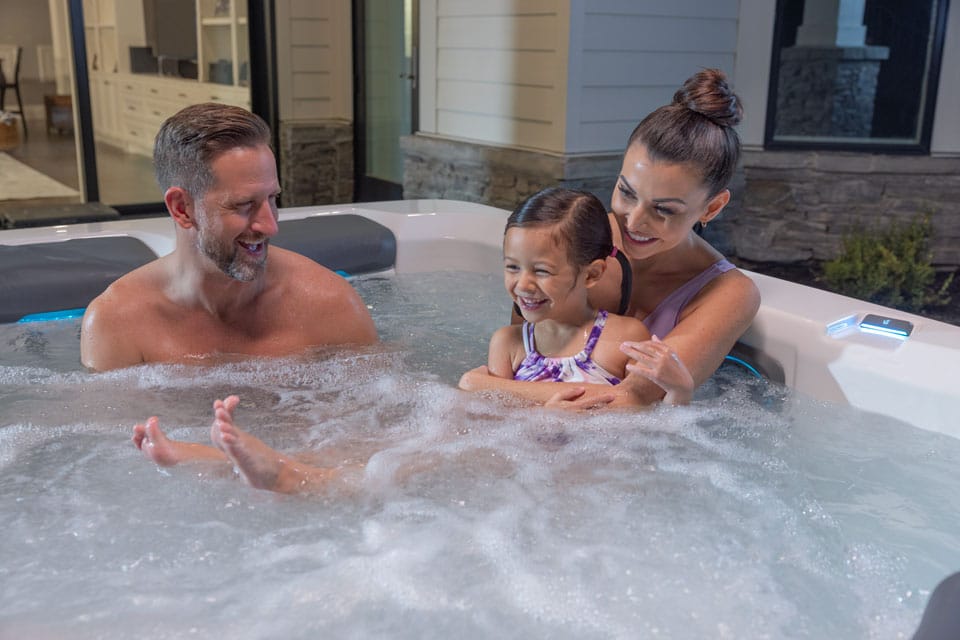The difference between an energy-efficient hot tub and a not-so-efficient model can add up to hundreds of dollars on your energy bill every year. But what makes the best hot tubs energy efficient? Look for these features to save money on your energy costs:
- Strategically placed, solid foundation
- Molded composite base
- Quality insulation
- Air-tight seals
- Simple plumbing design
- Fitted cover
Check out this short video, along with details below, that explains these energy efficiency concepts in a relatable, easy-to-understand way:
A Strategically Placed, Solid Foundation
Ensuring the energy efficiency of your spa starts where it’s placed and what it’s placed on. The goal, of course, is to minimize heat loss. A completely solid foundation in an appropriate location will go a long way toward keeping heat in rather than letting it escape unnecessarily. Sure, you need a level area under the spa, but that’s not enough when it comes to efficiency–even grass and gravel have space or “holes” the heat can move through. Simply put, the more solid the surface, the more heat is retained.
Placement of the spa works the same way. A hot tub that sits sheltered on all sides by a corner of the house and tall trees will not lose heat as fast as one placed out in the open, exposed on all sides.
Molded Composite Base
The actual base of the spa can also play a role in heat retention. As with the foundation, the base of a hot tub must be solid (as well as durable and impervious to water) in order to minimize heat loss. Some hot tub bases are constructed out of slats of wood or just a thin layer of plastic, which again allows for airflow and inefficiencies. On the other hand, higher quality units opt for a molded composite base of thick ABS. Not surprisingly, the denser the base, the more heat is retained.
Quality Insulation
Heat retention also has a great deal to do with the quality of your hot tub’s insulation. Without good insulation, heat from the water has an easier time escaping. As the water temp drops, the harder your hot tub has to work to heat up again when you’re ready for your next soak. Spas are usually insulated one of three ways: full foam, partial foam, and no foam. Since the denser the insulation, the more heat is retained, full foam serves as the best option for energy efficiency.
Air-Tight Seals
Hot tub construction typically includes a heating, filtration, circulation, and jet system. Within each system, different functional components are connected using hoses, pipes, couplings, elbows, tees, and other shell fittings. If the joints between these aren’t adequately sealed, leaks form, resulting in energy loss during water or air transport.
Hot tubs are plumbed using plastic PVC tubing, which requires a different sealing process than copper pipes. Sealing a PVC pipe involves coating it in adhesive, joining the pieces together, and then applying a metal clamp to secure the seal. If this isn’t done properly, or steps are overlooked, the seal will be either weak or incomplete, leaving the unit to leak either air or water, which causes not only heat loss but a host of other problems.
Simple Plumbing Design
There’s something to be said for the elegance of the spa’s design in terms of energy efficiency. And basic is best. Here’s why: The more fittings like elbows and union points in the design, the more friction is created ultimately slowing water flow resulting in additional system inefficiencies. And most importantly, the more piping the water has to travel through, the more heat is lost as it cycles through the system. The bottom line is the less plumbing, the more energy efficient your spa will be.
Well-Made Fitted Cover
It’s no secret that heat rises. To keep the spa from being an energy sieve when not in use, it’s critical to have a well-made, insulated cover, especially during the winter. Quality hot tubs typically come with their own fitted covers, designed specifically for that particular spa. The first thing to look for in a cover is high-density foam. The denser the foam, the less heat can seep through. Some covers also feature a heat-reflective material on the underside that reflects rather than block the heat, which may work to sustain water temps. You’ll also want to look for locking clip options to protect the cover from opening when the wind picks up.
Other Considerations
Spa Pumps
There’s a wide range of efficiency on spa pumps, but ultimately you’re going to want to have a spa with a dual pump system for maximum effect. Dual pump systems assign one to circulate the water, and one to run the spa jets, which means that you’re not overworking a single pump. This makes the design more efficient, and makes the pump last longer.
Lights
There’s a big difference between the wattage usage of incandescent, fluorescent, and LED bulbs, with LED bulbs being the most efficient and long-lasting by far. Opt for spas that use them, or consider replacing them soon after purchase.
Additional Tips
- Install some kind of wind barrier.
- Use a floating thermal blanket when not in use.
- Lower the temperature a few degrees.
- Regularly maintain the spa, including changing of filters and monitoring spa chemicals.
Electrical Consumption Testing
A great source for insight into specific brand energy efficiency is the California Department of Energy, which sets baselines manufacturers must comply. Results of these tests are available to the public and can be accessed online. At the very least, you want to ensure the hot tub you’re purchasing has taken and passed the test. If not, chances are that manufacturer is not considered reputable in the industry.
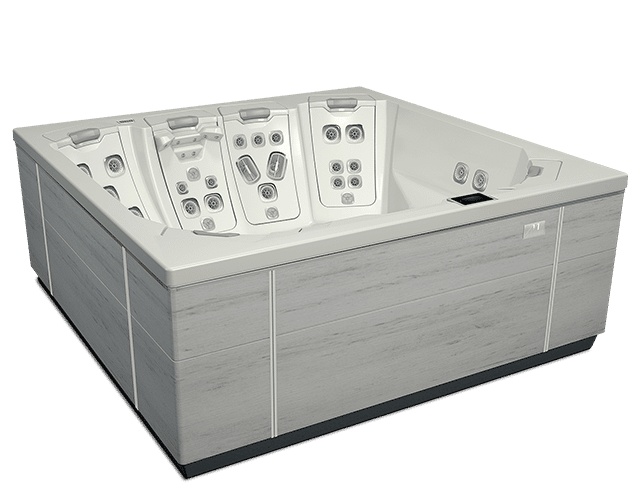
Get an Instant Price Quote on a Hot Tub
Design Your Own Bullfrog Spa
Get an MSRP price quote on a Bullfrog Spa model in your area by starting with our Design Studio software. Build your spa just the way you like it. Once you finish, you’ll receive your instant price quote.
